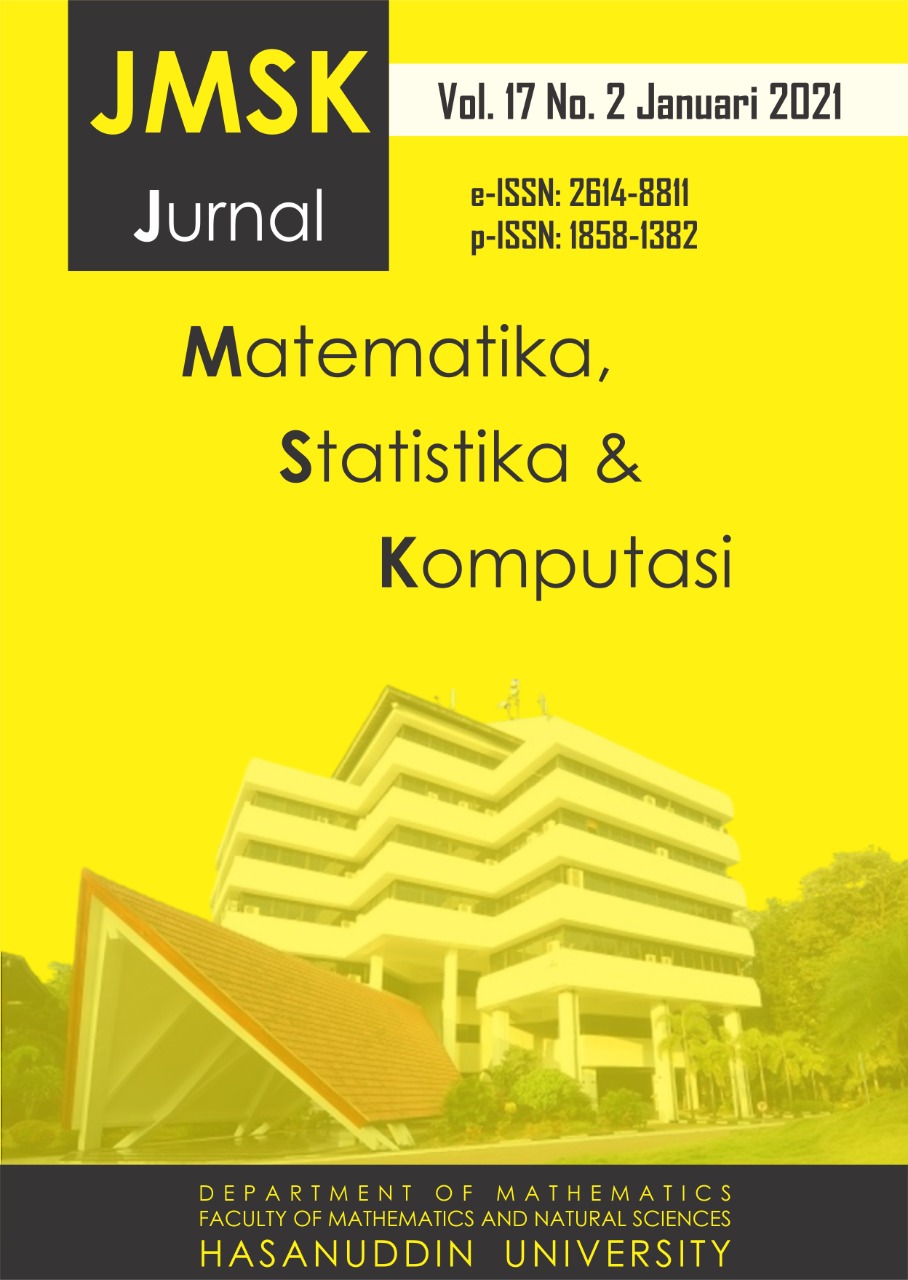Effect of Variability on Cronbach Alpha Reliability in Research Practice
DOI:
https://doi.org/10.20956/jmsk.v17i2.11655Keywords:
Cronbach Alpha, reliability, standard deviation, variability, varianceAbstract
This study aims to describe the effects of variability through data simulation to determine which aspect of variability that maximizes coefficient of Cronbach Alpha reliability. Cronbach Alpha is widely used for estimation of reliability, in recent still. This study served a conceptual and practical simulation for estimating the profound aspect of Cronbach Alpha coefficient relating to the variability of the data. This study carried out with data simulated using the rand between method by Microsoft Excel then simulate different categorical data responses to different range of items by manipulating sample size, range, number of items, variance and standard deviation. The results show that number of variance and standard deviation of data had the most profound aspect of Cronbach Alpha's reliability other than range. The increasing number on some aspect shows that standard deviation and variance has the stability to shows the positive correlation with the coefficient of Cronbach Alpha reliability other than range.
References
Anastasi, A., & Urbina, S. (1997). Psychological Testing (7th ed.). Upper Saddle River, NJ: Prentice Hall.
Cortina, J. M. (1993). What is coefficient alpha? An examination of theory and applications. Journal of Applied Psychology, 78, doi: 10.1037/0021-9010.78.1.98
Cronbach, L. J. (1951). Coefficient alpha and the internal structure of tests. Psychometrika, 16, doi:10.1007/BF02310555
Cronbach, L. J. (2004). My current thoughts on coefficient alpha and successor procedures. Educational and Psychological Measurement, 64,
Field, A. (2009). Discovering statistics using SPSS. (3nd ed.). Los Angeles: Sage.
Furr, R. M., & Bacharach, V. R. (2008). Psychometrics. An introduction. Los Angeles: Sage.
Guttman, L. (1945). A basis for analyzing test-retest reliability. Psychometrika, 10
Hoyt, C. (1941). Test reliability estimated by analysis of variance. Psychometrika, 6,
Jackson, R. W. B., & Ferguson, G. A. (1941). Studies on the reliability of tests. Department of Educational Research, University of Toronto.
Kuder, G. F., & Richardson, M. W. (1937). The theory of the estimation of test reliability. Psychometrika, 2(3),
Lord, F. M., & Novick, M. R. (1968). Statistical theories of mental lest scores. Reading, MA: Addison-Wesley.
McDonald, R. P. (1985). Factor analysis and related methods. Hillsdale NJ: Erlbaum.
Nunnally J, Bernstein L.(1994). Psychometric theory. New York: McGraw-Hill Higher, INC;
Osburn, H. G. (2000). Coefficient alpha and related internal consistency reliability coefficients. Psychological Methods, 5,
Revelle, W., & Zinbarg, R. E. (2009). Coefficients alpha, beta, omega, and the glb: Comments on Sijtsma. Psychometrika,74, doi: 10.1007/s11336-008-9102-z
Sijtsma, K. (2009). On the use, the misuse, and the very limited usefulness of Cronbach's Alpha. Psychometrika, 74, doi: 10.1007/s11336-008-9101-0
Tavakol M, Mohagheghi MA, Dennick R.(2008). Assessing the skills of surgical residents using simulation. J Surg Educ.;65(2)
Thompson, J.K. (2000). Body Image, Eating Disorder, and Obesity an Integrative Guide for Asesment and Treatment. Washington : American Psychological Association.
Urbina, Susana. (2004). Essentials of Psychological Testing. New Jersey:John Wiley Sons.
Warrens, M. J. (2015). Some relationships between Cronbach's Alpha and the Spearman-Brown formula. Journal of Classification, 32,
Zumbo, AM Gaderman. (2007). Ordinal Varsions Of Coefficients Alpha And Theta For Likert Rating Scales. Journal of Modern Applied Statistical Methods 6 (1), 4
Downloads
Published
How to Cite
Issue
Section
License
Copyright (c) 2020 Author and publisher

This work is licensed under a Creative Commons Attribution 4.0 International License.

This work is licensed under a Creative Commons Attribution 4.0 International License.
Jurnal Matematika, Statistika dan Komputasi is an Open Access journal, all articles are distributed under the terms of the Creative Commons Attribution License, allowing third parties to copy and redistribute the material in any medium or format, transform, and build upon the material, provided the original work is properly cited and states its license. This license allows authors and readers to use all articles, data sets, graphics and appendices in data mining applications, search engines, web sites, blogs and other platforms by providing appropriate reference.







